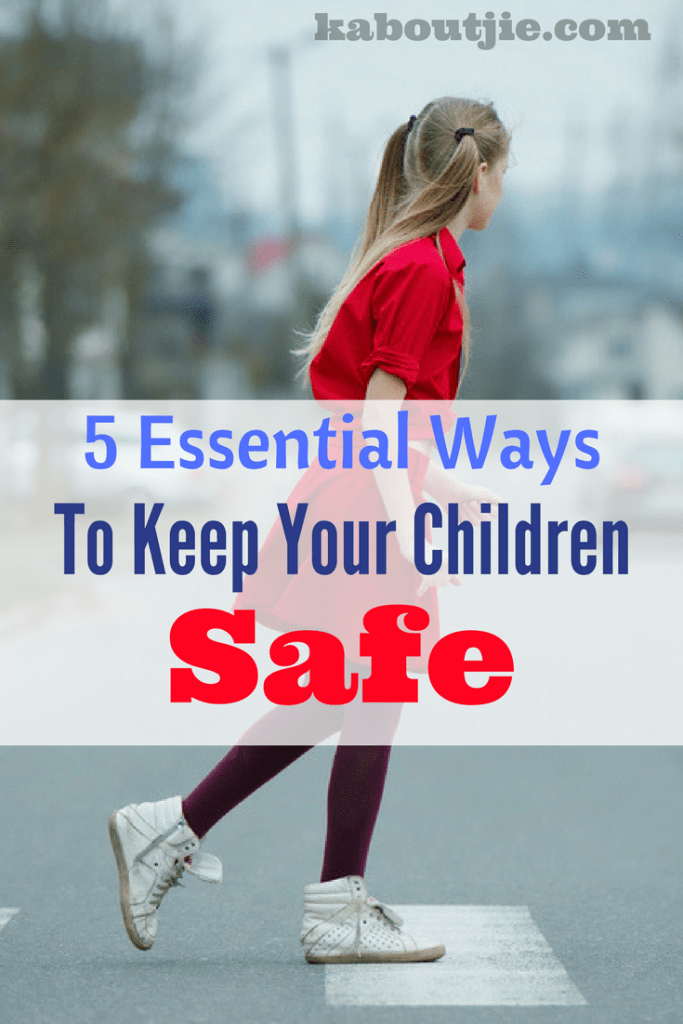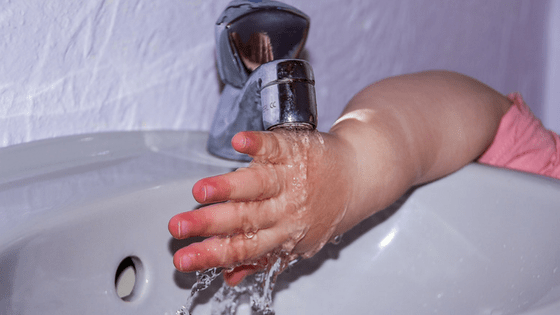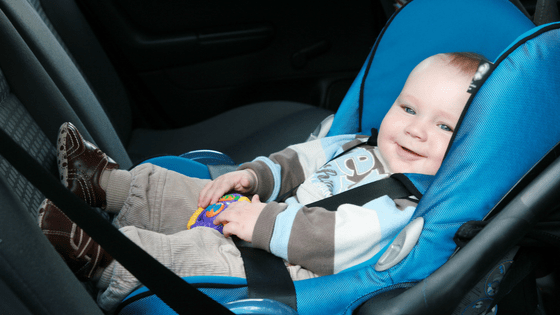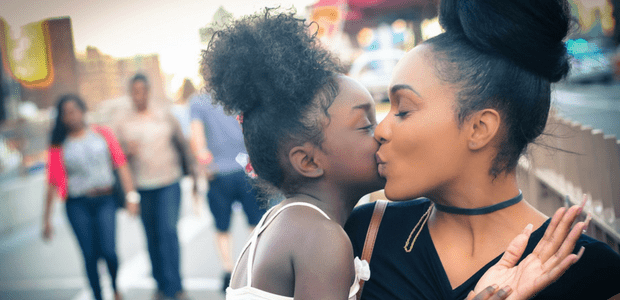As a parent we have many responsibilities towards our children ranging from teaching them manners to helping them to distinguish right from wrong. However the biggest responsibility we have is to keep them alive and safe from physical injury and any other sort of harm.
There are various things you can do to make your home baby and child safe, but the fact remains – your child will be heading out into the big wide world.
You will need to know how to keep your child safe and teach him some essential safety skills to ensure that your child knows what to do to keep himself safe when he is not with you too.
Here are some things that you need to be aware of to keep your child safe:

-
Washing Hands
Yes it sounds so mundane doesn’t it?
One of the leading causes of death of children worldwide is diarrhea and teaching your child proper hand hygiene is the best way to protect your child.
Teach your child to wash his hands properly by wetting his hands and lathering with soap on the front and back of his hands for at least 20 seconds before washing off the soap with water.

It is also essential to teach your child to wash his hands at these times:
- before, during and while preparing any food
- before and after eating
- after using the toilet
- after blowing or wiping his nose
- after coughing or sneezing
- before and after dealing with anyone that is ill
- before and after cleaning and dressing any wounds
- before and after dealing with baby diapers or helping anyone use the toilet
- after touching any garbage
- after touching any animal, animal waste or animal food

-
Road Safety
The most common cause of injury to children aged 5 to 19 are motor vehicle accidents.
All babies and toddlers need to be strapped into a baby seat.
Make sure that your child is always wearing a seat belt when you are driving. Teach your child how important it is to wear a seat belt to ensure that he wears one even when he is not with you. If your child will be driving with someone else ensure that the person driving the car will be buckling your child up.
Always make sure that you know the driving habits of the person that is giving your child a lift. Don’t let your child drive with anyone that speeds or disobeys any other road laws.
Teach your child how to cross the road properly and always teach your child to be on the defensive. He may do things correctly but there are people that drive very recklessly and your child needs to know to look out for this.

-
Water Safety
Drowning is the leading cause of death by injury in children aged 1 to 4 years old. Never leave your toddler or young child unattended in the bath or near any swimming pool or pond. A child can drown in very shallow water and accidents happen very quickly. A child can even drown in a bucket of water so don’t leave any lying around if you are cleaning! Toilets are drowning hazards too so don’t leave your child unattended in the bathroom and teach your child not to play with the toilet. It’s dirty anyway.
Teach your toddler that water is dangerous. Teaching your child to swim from an early age and some basic water safety rules will help to keep your child safe. Even though your child can swim do not let that give you a false sense of security, even though your child can swim always have an adult watching.
Some good water safety rules for children are:
- No dunking each other or pulling each other under water while swimming
- Always jump feet first
- No diving into shallow water
- Always have a swimming buddy (don’t swim alone)
- Don’t jump into unknown water
- Do not swim in fast flowing water
-
Poison Safety
Poisoning is another huge cause of child injury and death.
Storing all detergents and dangerous cleaning products out of your child’s reach and sight. Many other household products can also be toxic to children so check your cosmetics, personal care products, art products and even plants to ensure that they are safe for kids.
Always keep hazardous products in their original packaging so you and everyone else knows what it is and it is not mistaken for something else.
Keep medication, including vitamins in a safe place where children cannot access it. It is a great idea to install child safety locks on cabinets to ensure your children cannot access them.
Check for lead – many old homes used used lead based paints which is dangerous. Have your home checked and if you have any lead get a professional to remove all lead from your home.

-
Burn Prevention
Who can forget little Pippa, the toddler that got burnt by the braai (barbecue)?
Accidents happen so fast and catch you by surprise. It is essential to be vigilant at all times, especially when dealing with a fire and with cooking.
Make sure that your kids are not close to anything that is hot – your kettle, the stove, your oven and a fire if you are having a braai (barbecue).
While you are cooking make sure there are no pot handles facing out, always turn them in so that they can’t be knocked over.
Teach your child that certain things are hot and dangerous such as the obvious things mentioned but also cups of coffee, irons and anything else in your home.
Keep any matches, lighters and fire lighters well out of reach of children. Lock everything flammable away.
Check your water temperature and have your geyser adjusted if it is too hot. Make sure to always check your child’s bath water before putting your child in and when your child is older teach your child to always check the water temperature before getting in the bath.
Following these guidelines will help you to keep your children and your family safe from accidental injuries.
 Kaboutjie SA Mommy Blogs by Lynne Huysamen
Kaboutjie SA Mommy Blogs by Lynne Huysamen





This is so true @lynne my 5 years old was so against the sitbelt until he get the scar of his life , i was driving and all of sudden i have to brike and fast he was standing and he almost went out of the car and from that day he always sit down with his belt on i don’t even have to say anything anymore.
Wow I am glad you are both ok Vhutshilo. Accidents happens so quickly and seatbelts really DO make a difference.
Thank you, with kids you really can never be too careful